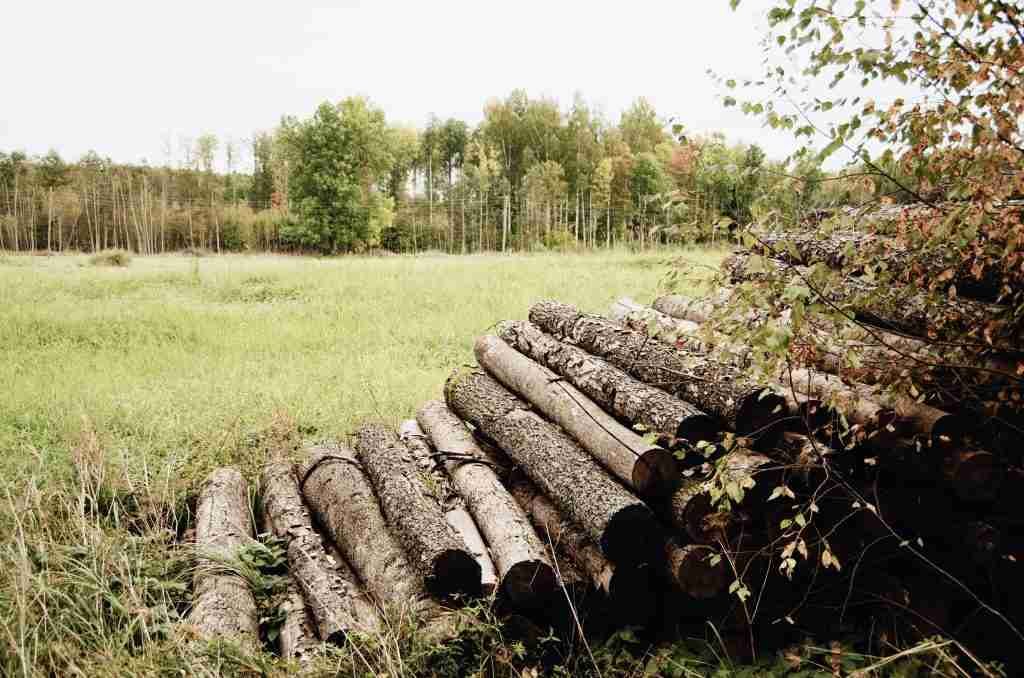Qinling pandas are a subspecies of the giant pandas. They are found in the Qinling Mountains of China.
However, there are only a few Qinling pandas in the world. Does that mean that Qinling pandas are endangered?
The answer is yes.
Qinling pandas are endangered species. The primary reason why Qinling pandas are endangered is that they are an endemic species.
This means that these pandas are limited to only one region worldwide, the Shanxi provinces. This leads to several problems. The pandas are not only hunted, but they also suffer from pollution.
But what are the other reasons why these species are endangered?
Table of Contents
- 7 Things That Endanger Qinling Pandas
- How Many Qinling Pandas Are There?
- Qinling Panda Conservation
- Recap
7 Things That Endanger Qinling Pandas
Rapid Industrialization

Rapid industrialization means building up factories and industries on a large scale. Due to rapid industrialization, the habitat of these pandas is lost.
Urban areas are also highly populated and are centers of industrial activities. The industrialization process leads to the emission of harmful chemicals and gases. These activities, in turn, lead to pollution in the mountain region.
Hence, Qinling Mountains also have pollutants that come from the urban area. These pollutants also pollute the bamboo in these forests. This, in turn, is harmful to Qinling pandas.
To summarize, industrialization has the following effects on Qinling pandas
- Organ damage
- Loss of dietary supplements (e.g. bamboo)
- Improper nutrition and diet
- High risk of extinction.
Potential Exposure to PAH
PAH, or Polycyclic Aromatic Hydrocarbon, is a toxic substance found more in the Qinling Mountain region than in the urban areas.
PAH enters the air due to the gases given out by vehicles, industries, and the burning of coal.
Researchers have gathered soil, water bodies, and feces over two years and found heavy amounts of PAH. The substance is responsible for inflammation, organ damage, development of cancer in the lungs, skin, and urinary tract.
The pandas are exposed to PAH in three different pathways;
- Inhalation,
- Dermal contact and
- Bamboo intake.
PAH can be absorbed into the bamboo the pandas eat. Even their waste shows a large amount of PAH in their digestive system.
Exposure to Toxic Pollutants
Qinling pandas are exposed to many environmental pollutants. The Qinling Mountain region is a biodiverse area full of metallic contaminants. The increase in human population and industrialization creates pollution.
Metals like copper, nickel, lead, and zinc are found plenty in the soils of the Qinling Mountains.
Bamboo absorbs these heavy metals, and pandas intake them along with bamboo. These metals are very harmful to the Qinling pandas as they can cause severe organ damage.
Deforestation

In simple terms, deforestation means clearing trees in wide areas.
Deforestation puts Qinling pandas at risk as they are only adapted to live in these forests. They are unable to move from their natural habitat as it provides them with enough food.
The temperate forests have tall trees which work both as an escape route and a napping place.
Deforestation leads to the loss of these tall trees, which endangers these pandas. When there are no tall trees, pandas cannot address upcoming dangers or enemies.
They use the trees as a high tower to check up on their territory. If they feel any threat is approaching, pandas use noises to warn others.
The others can then flee to the trees so the predators cannot reach them. The loss of trees means that the survival rates of the Qinling pandas are at stake.
Pandas can run fast, but the predator would catch up without a hiding place. Deforestation also means the loss of their beloved bamboo.
Panda’s diet primarily consists of bamboo, and deforestation harms the bamboo forests. Without the primary food source, pandas can starve.
Hunting and Illegal Poaching
The smuggling of panda cubs or illegal poaching is heavily increasing in China. Pandas are widely used in Chinese medicine even today. This puts them at a higher risk of being hunted.
Panda meat was also eaten in ancient China. This may be a reason why there are so little numbers of pandas found now.
Even though Chinese people do not eat panda meat now, some people still hunt them.
Qinling pandas have pretty, uniquely colored coats and are hunted for their fur. The regular giant panda is black and white, but Qinling pandas are brown.
This brown fur is in high demand in some of the black markets of China.
Qinling Pandas Struggle to Have Babies
Believe it or not, pandas generally have a tough time having babies. This is due to the fact that female pandas go into heat for a maximum of two days.
It is like a one-time chance for the male panda to mate with a female panda.
Qinling pandas are no different. The male panda spends days impressing the female, fighting with others.
In comparison, the female panda enjoys all the attention thrown at her. Even though pandas can have one to three cubs at a time, only the strongest one survives.
Female pandas also do not mate until the cub is two years of age. Another thing is that pandas are super picky about choosing one another as mates.
Diseases
Sadly, the Qinling pandas are a result of inbreeding. Inbreeding means mating between two individuals who are close relatives.
One of the significant drawbacks of inbreeding is that it can lead to many diseases. The panda parents pass down their condition to the offspring, and so on.
Qinling pandas have poor health conditions because of inherited diseases and conditions. Inbreeding can cause severe genetic mutation, and this mutation increases the risk of extinction.
The mutated gene is prone to be more affected by environmental threats and other ailments like diseases.
How Many Qinling Pandas Are There?

According to a study done in 2001, there are about 100 Qinling pandas left. But a newer study shows that their numbers have increased.
Now there are approximately 200-300 pandas left in the world.
Thanks to the protective measures taken by the government of China, the number of these adorable and unique pandas is increasing.
Qinling Panda Conservation
The IUCN or the International Union for Conservation of Nature does not include Qinling pandas in their Red List or any of their vulnerable lists.
But it is believed to be on the same Red List as the giant pandas because it is a subspecies.
The Red List protects pandas with punishable laws if any harm is caused to them. The government of China is also trying to partially merge bamboo forests with bamboo corridors.
These corridors combine the most fragmented bamboo forest to ensure the pandas move safely.
More research centers are to be set up to know about the subspecies. The monitoring and research enable scientists to learn more about the Qinling pandas.
Cameras are set up in the forests to monitor the movement of the pandas as well as protect them from poachers.
China’s government will make more reserves and link up the bamboo pockets to help pandas. The reserves ensure that the pandas thrive in their habitat.
Recap
Both the giant panda and the Qinling panda are vulnerable species that will not survive if we do not help them. Thankfully, the number of Qinling pandas is increasing, and reserves are being made to guarantee their safety.
Qinling pandas are endangered for various reasons, some man-made and some natural.
The major reasons for their endangerment are the rapid growth of industrialization and urbanization. Both these reasons introduce toxic environments and pollutants to the panda habitats.
The inability to change habitat and being restricted to only one is another reason for them to be endangered. Deforestation and struggling to produce offspring also do not help the Qinling pandas to increase in number.
But the good news is that the Government of China is trying its best to protect these cute creatures.
The IUCN also protects the Qinling panda in addition to giant pandas. Moreover, people are now aware of the need to conserve these species.
Similarly, we need to know if other pandas are endangered or need protection. To know if red pandas are extinct, read Are Red Pandas Extinct? and find out the answer!

